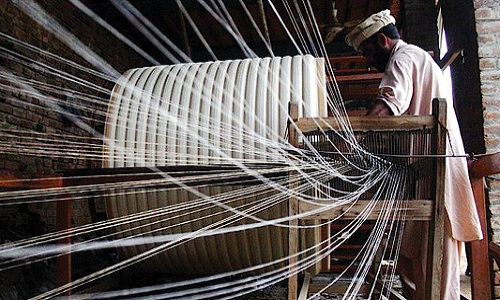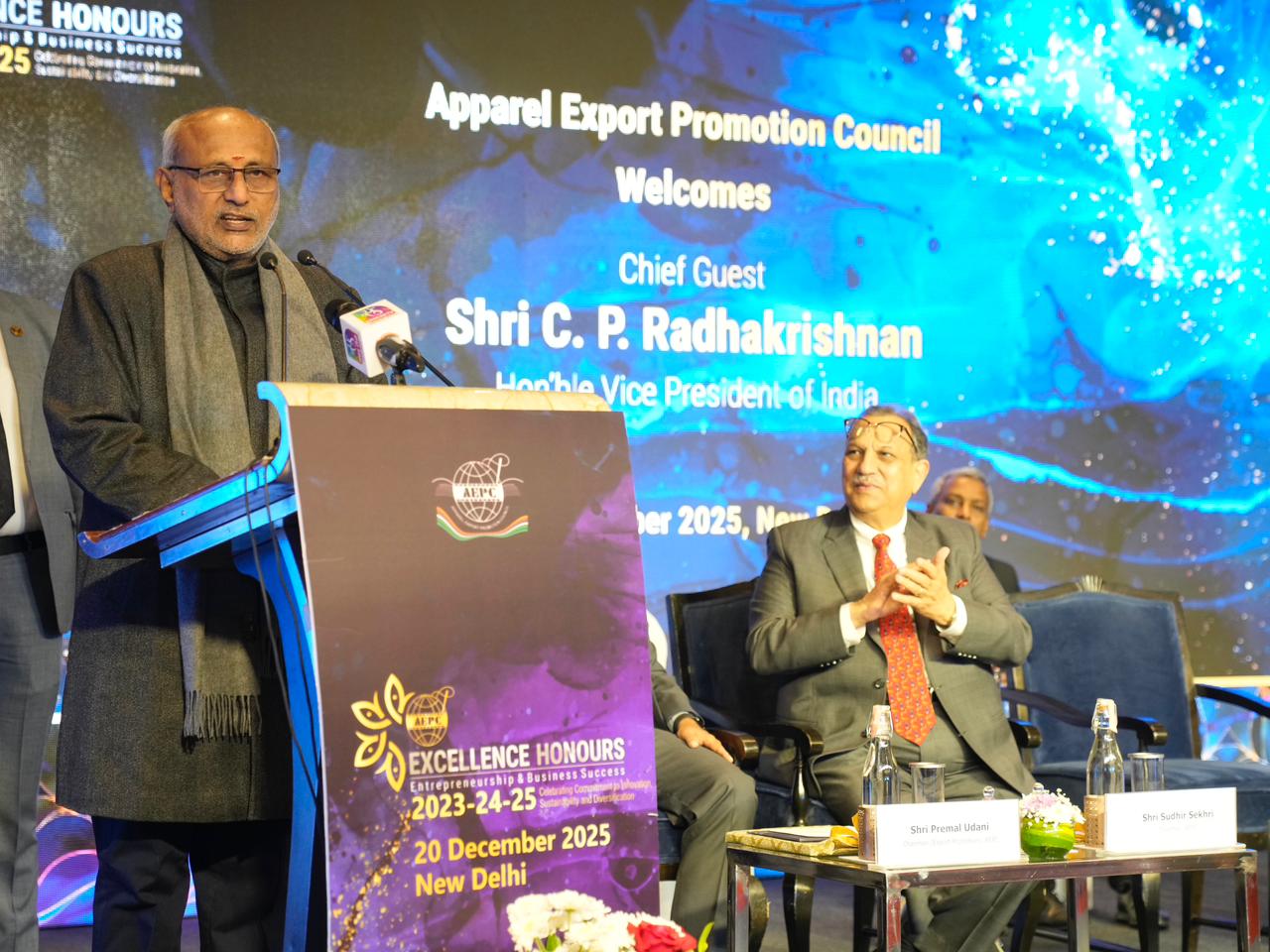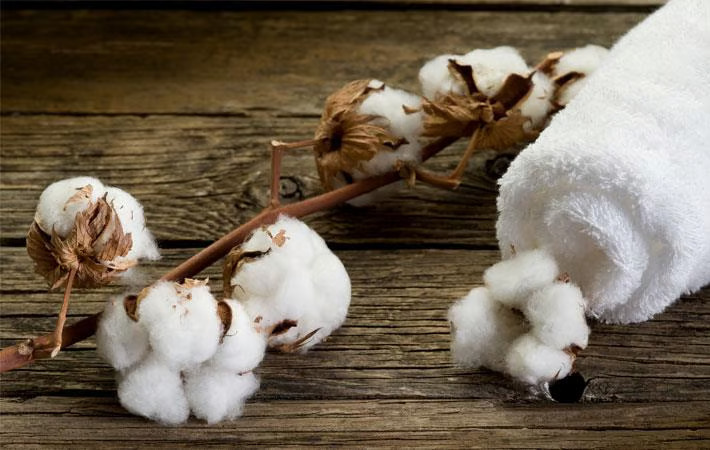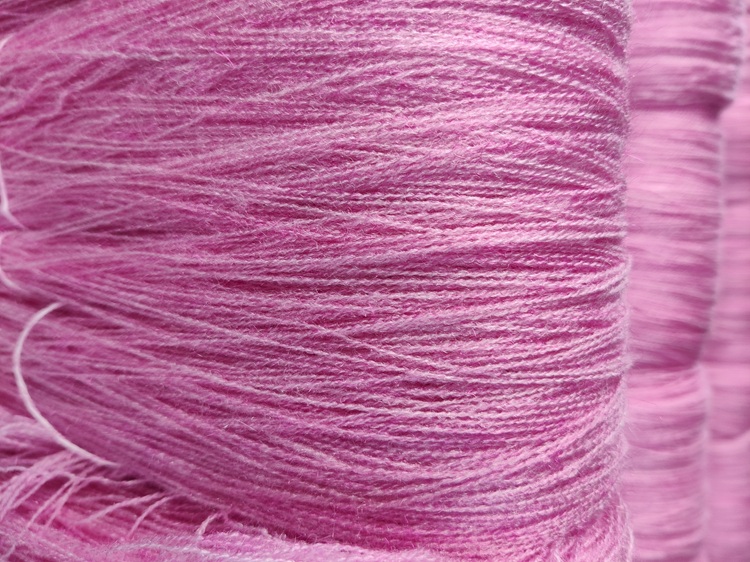FW
Garment manufacturers in Nepal have urged the government to give export incentives to boost business of Nepali apparels. This could be done through a supplementary budget, they say. Nepali garments are up to 18 per cent more expensive in the international market compared to garments from other countries, local apparel manufacturers have demanded the government should provide 10 per cent export incentive on total export value, which according to them, is a must to bring down their cost of production.
Citing the example of garment industry in Bangladesh, manufacturers say Bangladesh has progressed in garments as the government has given 10 per cent export incentive to local apparel manufacturers. Nepal and Bangladesh both started garment exports in the 80s. While Bangladesh progressed and the exports market is worth Rs 28 billion annually, Nepal is lagging behind and its garment exports is worth only Rs 5 billion every year.
Manufacturers say Nepali garments have high demand in the European Union, United States and India. Officials of Garment Association of Nepal (GAN) also stated that implementation of ‘No Work, No Pay’ provision introduced by the Industrial Enterprise Act is crucial to bring down production cost in Nepali garment industry.
After selling off DKNY to G-III Apparel Group earlier this year, LVMH Moët Hennessy Louis Vuitton claims it has 5.4 per cent passive stake in the group. A passive stake is a form of investing where the shareholder in this case (LVMH) takes no active part in running the company.
According to December 12 Securities and Exchange Commission filing, which reflects the December 1 acquisition, LVMH does have a shared voting power. G-III Apparel Group, which also owns licenses for Calvin Klein, Ivanka Trump among other brands sold $75 million in common stock to the luxury conglomerate chaired by Bernard Arnault in connection with the DKNY deal.
In July, LVMH agreed to sell Donna Karan International to G-III Apparel Group for of $650 million, a rare disposal for the French luxury-goods maker. But this move failed to turn around a label that once defined workplace attire for successful U.S. women. G-III funded the total purchase price for DKNY, subject to certain adjustments with a combination of cash, $75 million of newly issued shares of its common stock to LVMH and a $125 million junior lien seller note of which $75 million in principal amount has a six and a half year maturity and $50 million in principal amount has a seven year maturity. The cash portion of the purchase price was paid from the proceeds of a $350 million six-year senior secured term loan, and the balance from borrowings under a $650 million five-year senior secured asset based revolving credit facility and cash on hand.
Inditex, the world's biggest clothing retailer and owner of Zara, has reported a rise of 9 per cent in its nine-month profit. It also announced that its sales growth accelerated in recent weeks, despite warmer than usual autumn weather in many European countries.
As its fashion peers struggle to adapt to changing consumer tastes, with Abercrombie & Fitch and Gap posting dismal fourth-quarter sales last month, Inditex's fast-fashion business and online prowess have kept it ahead. The company is known for speedily reacting to changing trends and weather by keeping its manufacturing bases close to its distribution centre in the northern Spanish region of Galicia.
Items such velvet dresses, military blazers and mini skirts helped push sales up 14.5 per cent in local currencies in the nine months to Oct. 31.Net profit was up 9 per cent at 2.2 billion euros ($2.3 billion), while earnings before interest, tax, depreciation and amortisation (EBITDA) were up 8.4 per cent at 3.6 billion euros, both results in line with anaysts' forecasts, according to a poll.
With over 7,200 stores in 93 markets, Inditex has desisted from opening many new store as its primary driver of growth. Instead, it is setting up large flagship stores in key locations and tying in its online business.
The total amount of cotton exports from Egypt increased by 77.7 per cent compared to the same period of the previous year, in the fourth quarter of 2015-16 agricultural year, the Central Agency for Public Mobilisation and Statistics (CAPMAS) has reported. Egypt exported 139,900 metric kantar of cotton during June/August 2016 compared to 78,800 metric kantar last year.
In a statement, CAPMAS said the increase was due to low price of Egyptian cotton in international market compared to other countries’ and the low volume of cotton exports in the same quarter of previous year. The statement also said India was the largest importer of Egyptian cotton buying 61.7 per cent of the total cotton exports totaling 86,300 metric kantar.
The total consumer volume of domestic cotton was 117,800 metric kantar during the Q4 of 2016, compared to 109,700 metric kantar in Q$ of previous year, a 7.4 per cent increase. The amount of cotton that had been compressed from June to August was 21,600 metric kantar, compared to 38,400 metric kantar for the same period in the previous season, a decline of 43.8 per cent.
Esprit has opened a school in Bangladesh called Yes Center with the aim of providing educational aid to supplier countries. Esprit plans a similar school in Pakistan and more will follow.
The brand is pursuing the United Nations Sustainable Development Goals, which aim to develop sustainability on an economic, social, and ecological level. Among European countries, many of Esprit’s clothes are produced in emerging countries. The company’s ambition is to give something back to these countries. By setting up educational opportunities, the schools, it’s hoped, might enable better working conditions and economic and social independence, especially for women.
Within the Yes Centers students are taught subjects like safety and quality management, English, computer training, accounting, and courses on gender equality and human rights. This curriculum is meant to increase the alumni’s chances of higher education and employment beyond the textile industry.
In 2013 following the Rana Plaza disaster Esprit joined the Bangladesh Accord on Fire and Building Safety. In 2015-16 more than 97.6 million garments, 6.5 million accessories and 3.3 million shoes were produced for Esprit. The finished goods were sourced from 25 countries in Asia, Africa and Europe. The company’s main sourcing countries are Bangladesh, India, China and Pakistan.
The fashion industry is the second most environmentally damaging in the world. With more than 60 per cent apparels being manufactured in developing countries, it’s likely that the garments in everyday are made using extremely harmful production methods and have travelled half way across the planet in cargo ships powered by fossil fuels.
With consumers taking the implications of carbon emissions seriously, the fashion industry is realizing the importance of doing business the right way. Green and fair trade designers are utilising domestic talent and sustainable technologies are gaining traction. However, the majority of large scale fashion houses still source cheap labour from overseas and use unethical manufacturing processes.
Over 25 per cent of the world’s insecticides are used for cotton farming; one fifth of the world’s water pollution stems from fabric treatment and each year over 10.5 million tons of clothing goes straight to landfills in America. The need of the hour is to scrutinise the fashion industry just as much as one scrutinises burning of fossil fuels and cattle farming to tackle climate change effectively.
It is in this context that slow fashion is gaining ground. The term slow fashion was coined by Kate Fletcher of the Centre for Sustainable Fashion, an organisation devised to question and challenge reactionary fashion cultures, which reflect and re-enforce patterns of excessive consumption and disconnection. Part of the slow fashion philosophy is to encourage consumers to purchase longer lasting items, rather than multiple cheaper items. In short, it’s about looking at the bigger picture.
Besides alleviating pressure on natural world, the slow fashion movement supports independent businesses, domestic artisans and serves as a catalyst for creativity, encouraging designers to embrace their instincts and go against the grain. Fundamentally, it’s a positive for everyone.
However, to change the industry, the general attitude of the consumers need to change first. Renowned fashion houses, such as Stella McCartney and H&M are trying to set an example by working towards creating a sustainable supply chain. And many others are following their example.
The Bangladesh government, International Labour Organisation (ILO) and the European Union (EU) signed a joint declaration of launching a project called ‘Skills 21’. It is aimed at developing a skills training module of international standards in line with the demand from global labour market.
Under the €20 million project, the ILO and EU will work for institutional development of technical education under the technical and vocational education and training program and also to improve the skills development module in Bangladesh, says ILO director-general Guy Ryder.
EU ambassador to Bangladesh Pierre Mayaudon points out Bangladesh is in need of a skilled labour force to ensure the sustainability of its economic growth. The Skills 21 project would help Bangladesh to define a national skills development policy and the EU would continue its support for further developing and completing the establishment of a comprehensive and coherent TVET system and its institutional setup for a long-term effectiveness, the envoy said.
Bangladesh education minister Nurul Islam Nahid believes the EU project would support the commitments of the government to inclusive economic growth and full and productive employment for all. He says a skilled and productive workforce would make a major contribution to the Bangladesh’s goal of becoming a middle-income country by 2021.
Having fallen 21 per cent in volume terms and 14 per cent in value terms, the decline in spun yarn exports from India slowed down in November. Shipments of spun yarn of all kinds were 90.1 million kg worth $261.1 million or Rs, 1,733 crore implying per unit realisation of $2.90 per kg which was down US cents 11 from previous month and up US cents 24 as compared to November 2015. China’s cotton yarn imports from India recovered in November and demand stayed strong with shipments of Indian yarns piling up in different ports of China. Cotton yarns from Vietnam are suffering due to higher material costs as the country needs to import its cotton.
Once TPP is scrapped, Chinese investors could also opt out of spinning industry in Vietnam. This would mean Vietnamese apparel units will not enjoy duty-free access to the US market in the future. In November this year, 77 countries imported spun yarn from India, with China on top accounting for 39.8 per cent of the total value with imports declining 12.5 per cent in volume terms YoY and value edging down 4.3 per cent. Bangladesh was the second largest importer of spun yarns accounting for around 12.7 per cent of all spun yarn exported from India. Export to Bangladesh was down 37.6 per cent in volume and 32.2 per cent lower in value.
Pakistan was the third largest importer of spun yarns, which saw volume plunging 49.9 per cent while it was down 39.2 per cent in value. These three top importers together accounted for around 55.9 per cent of all spun yarns exported from India in November. China was the largest importer of cotton yarn from India in November, followed by Bangladesh and South Korea. The top three together accounted for more than 63 per cent of cotton yarn imported from India.
"Having largest production chain with inherent potential for value addition at each stage of processing from cotton to ginning, spinning, fabric, dyeing and finishing made up garments, Pakistan is a growing textile haven. Contributing nearly one fourth of industrial value addition, the industry employs about 40 per cent of labour force, accounting for 8 per cent GDP. Its average share of about 58 per cent in national export, however, despite being the 4th largest producer and 3rd largest consumer of cotton globally, Pakistan’s comparative advantage diminish due to export of low value added textile products."

Having largest production chain with inherent potential for value addition at each stage of processing from cotton to ginning, spinning, fabric, dyeing and finishing made up garments, Pakistan is a growing textile haven. Contributing nearly one fourth of industrial value addition, the industry employs about 40 per cent of labour force, accounting for 8 per cent GDP. Its average share of about 58 per cent in national export, however, despite being the 4th largest producer and 3rd largest consumer of cotton globally, Pakistan’s comparative advantage diminish due to export of low value added textile products.

Though an emerging area of high value addition, technical textile is gaining thrust from the government. There is huge scope for the expansion of functional textile in different segment of textile industries like Home tech, Mobi Tech. Medi tech, Geo Tech and Spo Tech.
Increasing contribution in technical textile
Pakistan’s share in technical textile is little because of the lack technological advancement, which restricted cotton’s presence in home textiles where textile fibrous materials are becoming basic component in bridges, architecture combat vehicle automotive aeroplane medical implant protective wear against bullet shock radiation. World consumption of this sector is increasing rapidly. There is a need to work on Mobi tec, Home tech, Medi tec, Protective tec, through this priority list can enhance export potential while reducing the imports in bulks. Developmental activities in this area will be focussed on new material, new process and new application with economic liberalisation and globalisation.
Befitting policy
In textile policy 2014-19, the government decided to develop a proper strategy for the promotion of technical textiles in the country. For this purpose, exclusive centre of excellence to impart training, develop skills and targeted to share relevant information about world trends in such field like geotech, meditec, spotec would be established. Government is also pursuing the KOICA who has shown interest in establishing a research facility for technical textiles university Faisalabad. The non-woven sector is one of the emerging sub-sectors having considerable share in value-added products to encourage this sector.
In current Textile Policy, the government of Pakistan has taken special initiatives for institutional restructuring and human resource working under the ministry in field of research, textile engineering, international trade matters, negotiation project development project monitoring tariff rationalization and other related matter for enhancing capacity building of the Ministry and its organisations as well. National Textile University will extend its support to provide higher education to fulfill the gap in R&D. The initiative will be done in collaboration with foreign donor agencies and it will also set up a department for textile dyes, pigments finishing to support and chemical manufacturing in the country. Since it requires huge amount of finance, the ministry is approaching for allocation of funds from Export Development Fund, PSDP through PC-I, while donors are also requested to aid in financing.
The Textile Policy initiatives will strive to compliment strengthen support relevant initiatives taken by other federal ministries, provincial government or donors will also strive to avoid any duplication. For skill enhancement, Ministry of Textile Industry will provide technical support for up-gradation of EDF funded textile training institutes to meet International requirements and eliminate skill gap for manufacturing high value added textile and technical textile product. It is estimated that by taking all these steps, technical textile segment will be in a better position to contribute significantly.
Solapur district in Maharashtra wants to develop as a major supplier of school uniforms for the whole country. Solapur is known for easy availability of transport, labor and raw materials. It has more than 1,000 garment manufacturing units and is well connected with the rest of the country with a rail and road network and the nearest airports being Mumbai, Pune and Hyderabad.
The district is already contributing six to seven per cent of the trade volume of the country’s Rs 18,000 crores uniform manufacturing industry. To showcase its potential, an uniform and garment exhibition will be held at Solapur between January 5 to 7. The fair will highlight the capabilities of Solapur, which in turn would lead to the setting up of more garment factories and thus more jobs in both skilled and unskilled areas.
Delegates from over nine countries have confirmed their visit to the exhibition. As many as 6,000 retailers from across the country are expected to visit the fair. Apart from school uniforms Solapur’s garment industry is known for children’s garments, men’s and women’s dresses. The district seeks investments from national and international garment manufacturers.
Generally, schools in the northern part of the country have separate summer, winter and sports uniforms, whereas most schools in the south have just one main uniform.












